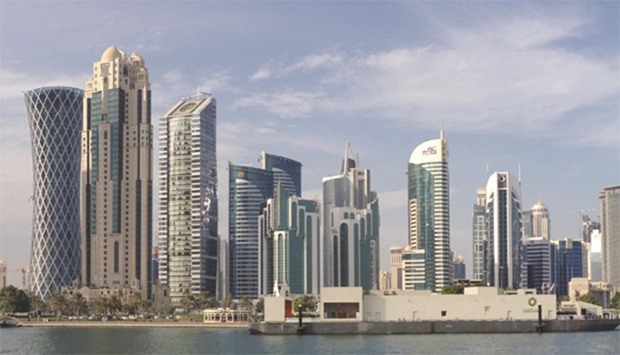Qatar is likely to have registered a GDP growth of 4.7% in 2015, which is expected to rise to 4.9% this year, said Al Masah Capital in a report.
The Mena Region, it said, was expected to witness a 3.8% growth in GDP in 2016.
In contrast, the global economic growth prospects are somewhat modest with the World Bank, International Monetary Fund (IMF) and the Organisation for Economic Co-operation and Development (OECD) lowering their forecasts to 2.4%, 3.1% and 2.9% respectively.
The sharp decline in oil prices, various global factors and rising geopolitical tensions meant that the Mena region is estimated to have registered a lower GDP growth rate of 2.3% in 2015 as opposed to 2.6% a year earlier. According to the report, despite these headwinds, the Mena region has continued its growth trajectory with the same expected this year on account of the various government initiatives to introduce alternative measures to boost revenues and GDP contributions of the non-oil sector.
“With oil prices dropping to record lows since mid-2014, government revenues are dwindling and state deficits are burgeoning. Oil price volatility is expected to continue in 2016 and hence increasing non-oil sector revenues will enable governments fund their ambitious spending programmes which are key to sustaining regional economic growth,” Al Masah Capital said.
The report titled ‘Mena Yearbook – 2016’ highlights and analyses the economic performance and prospects of the key regional economies namely the six GCC countries and Egypt, as well as the key developed economies of the USA, Eurozone and Japan, and emerging economies of China and India.
It highlights the various macroeconomic challenges that prevailed in 2015 which are expected to persist and most likely intensify further this year. The events that unfolded in 2015, the success or failure of the divergent monetary policies of the central banks in developed economies and headwinds in key emerging markets especially China, are critical factors that will shape the global economy in 2016, cites the report.
Lower oil revenues in 2015 have weakened the fiscal position and impacted the capital spending programme of the Saudi Arabian government aimed at boosting economic activity. Amidst tough economic conditions in 2016 and expectations of a sizeable reduction in project spending and gradual cut in subsidies, the IMF forecasts GDP growth to be curtailed at 1.2% down from 3.4% in 2015.
The UAE, despite being the most diversified market in the region, is expected to register a modest 3.1% GDP growth in 2016 as concerns over low oil prices continue to prevail resulting in a slowdown in economic activity.
The US economy gained further strength in 2015, with annual growth expected to be the strongest since the post-crisis rebound in 2010 on account of the gradual improvement seen in the labour market.
Estimated to grow at 2.4% in 2016, the US is expected to mainly drive global economic growth this year along with other developed economies.
The Eurozone is on a gradual recovery path which is likely to improve further on the back of loose monetary policy by the central bank; however, deflationary pressure continues to persist. It is expected to register a 1.5% growth in 2015 on account of strong domestic demand driven by the progress made in the labour market, the report says.

